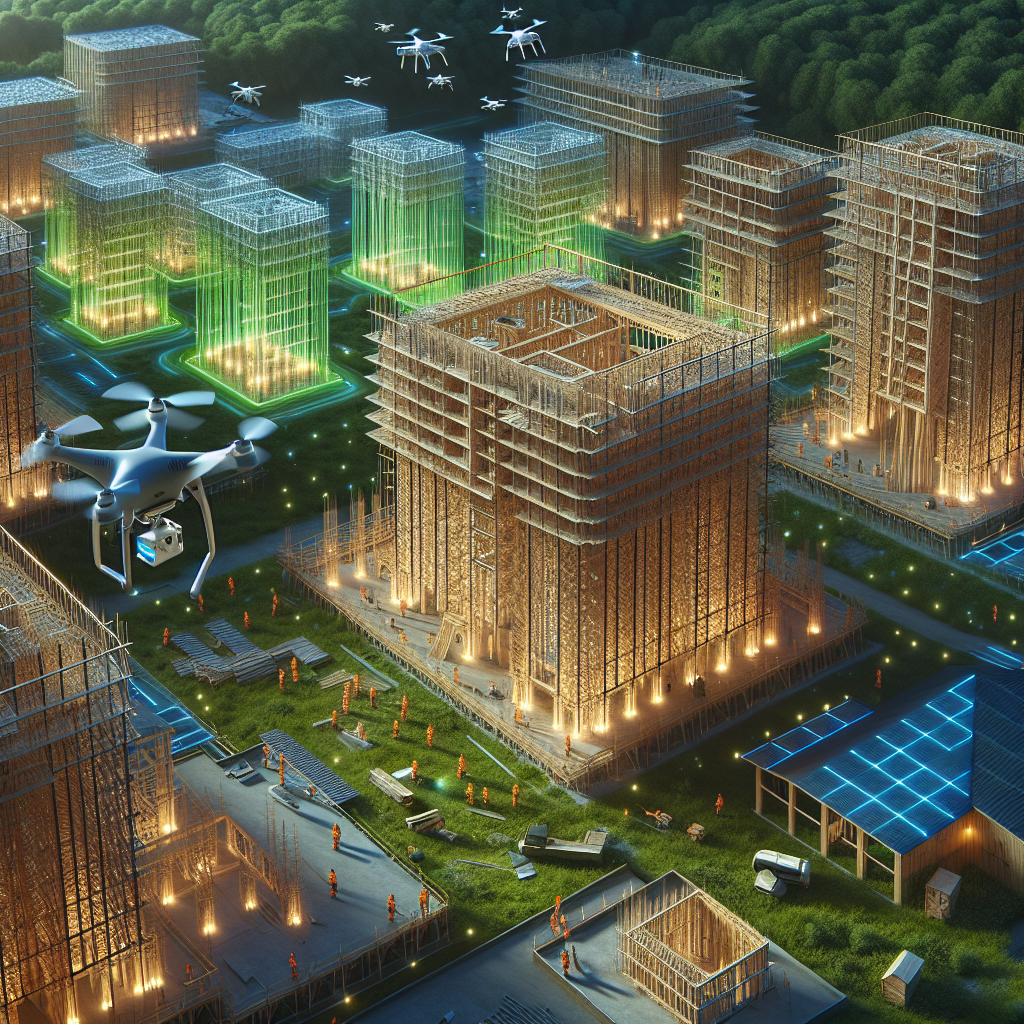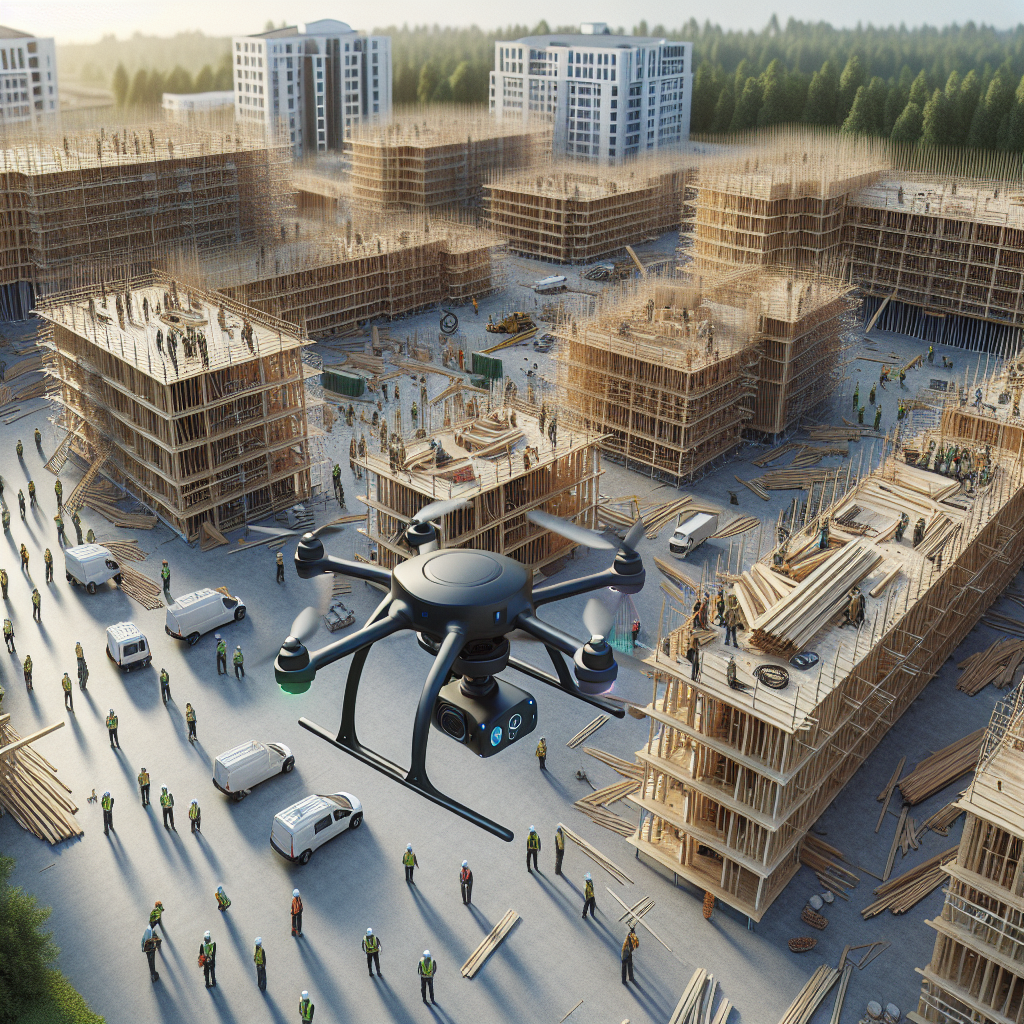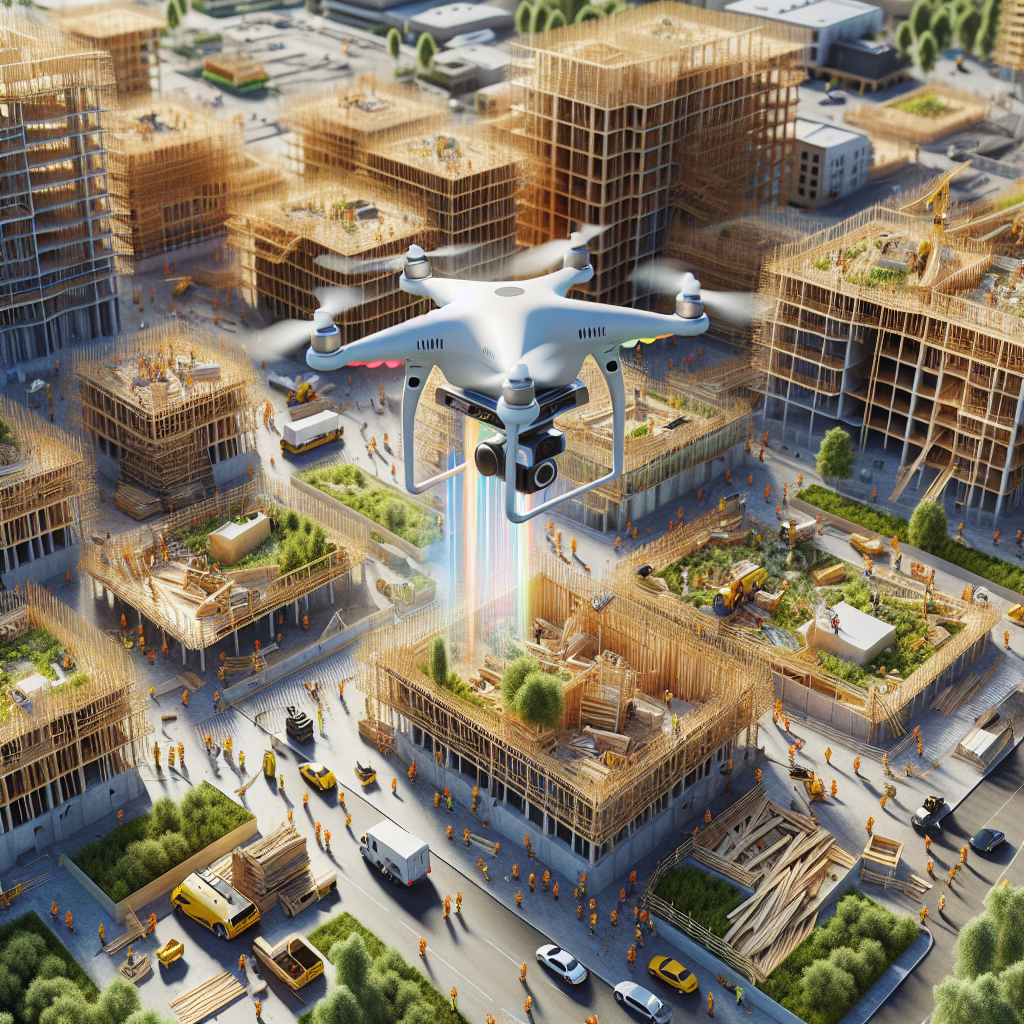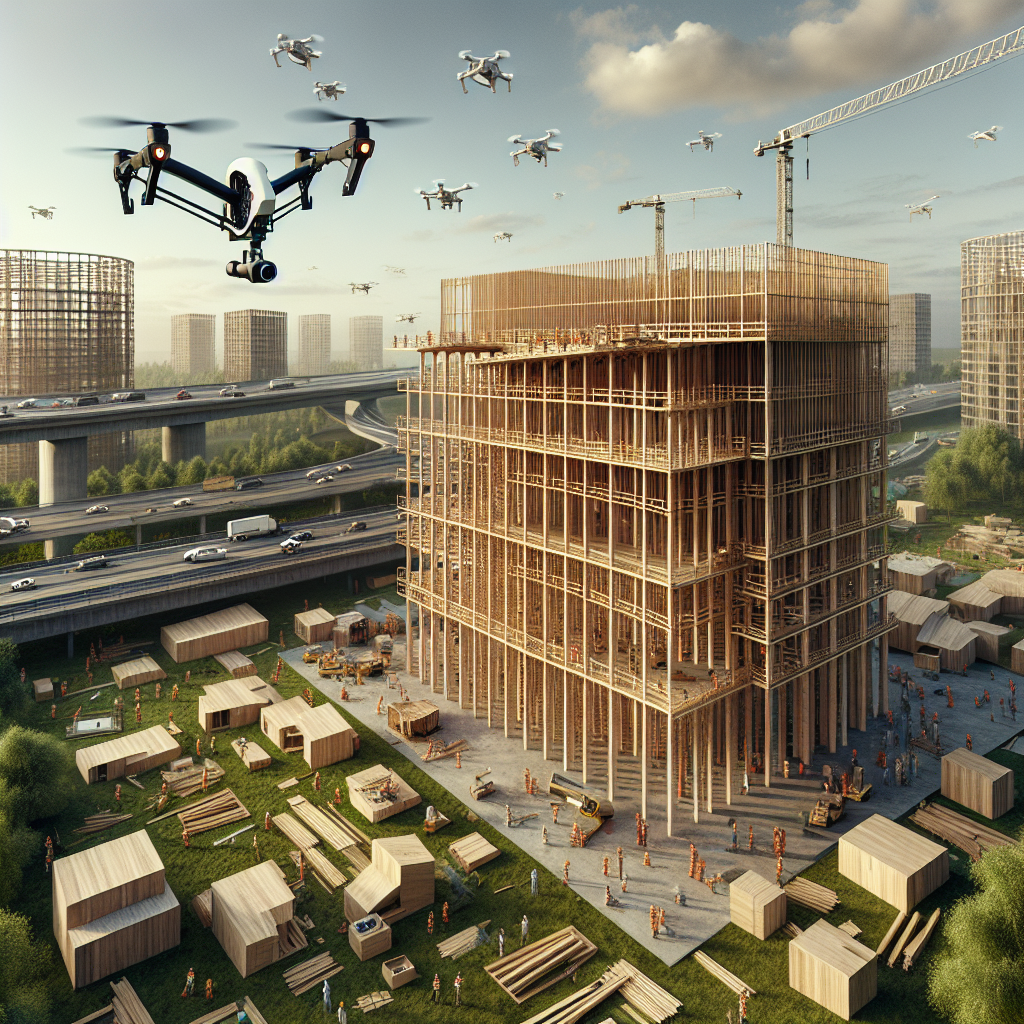Drones in Construction: Boosting Efficiency and Safety On-Site

Drones in Construction: Boosting Efficiency and Safety On-Site
In the realm of architecture and construction, innovation has always been a cornerstone of progress. From the rise of timber in high-rise construction to the exploration of biophilic design, the industry continuously seeks new methodologies to enhance both functionality and aesthetics. Today, a new technological protagonist has emerged, revolutionizing the construction landscape: drones. These unmanned aerial vehicles (UAVs) are reshaping traditional construction practices, promising unprecedented efficiency, safety, and precision on-site.
The Rise of Drone Technology in Construction
The integration of drones into construction processes is not merely a futuristic vision; it is a tangible reality transforming job sites worldwide. Once primarily associated with photography and recreational activities, drones have evolved into sophisticated tools equipped with advanced sensors, high-resolution cameras, and precise GPS systems. According to a recent report by Goldman Sachs, the global drone market is projected to reach $100 billion by 2025, with construction and infrastructure sectors among the most significant adopters.
Architects and designers have always been at the forefront of embracing technological advancements. As seen in the futuristic city designs of films like Blade Runner 2049, technology profoundly influences architectural visions. Similarly, drones are becoming indispensable in translating complex designs into reality, offering unparalleled accuracy and efficiency.
Enhancing Efficiency Through Aerial Insights
One of the most significant advantages drones bring to construction is their ability to capture detailed aerial imagery and data rapidly. Traditional site surveys, which previously required extensive manual labor and time, can now be completed swiftly and accurately. Equipped with LiDAR (Light Detection and Ranging) technology, drones generate precise 3D models of terrains and structures, enabling architects and engineers to visualize projects comprehensively before breaking ground.
For instance, during the development of Paris’s infrastructure for the 2024 Summer Olympic Games, drones played a pivotal role in site mapping and progress monitoring. The high-resolution imagery allowed project managers to identify potential issues early, significantly reducing delays and cost overruns.
Moreover, drones facilitate real-time monitoring of construction progress. Project managers can remotely track developments, assess adherence to timelines, and make informed decisions swiftly. This capability not only streamlines communication but also enhances transparency among stakeholders, fostering a collaborative environment essential for successful project completion.
Elevating Safety Standards On-Site
Safety remains a paramount concern in construction, an industry historically fraught with risks. Drones offer a transformative solution by minimizing human exposure to hazardous environments. Tasks such as inspecting towering structures, bridges, or scaffolding, which previously posed significant risks to workers, can now be safely conducted by drones.
In disaster-prone regions, drones are instrumental in assessing structural integrity post-calamity. As explored in our article on disaster-resistant and resilient building design, timely evaluations are crucial in mitigating further damage and ensuring community safety. Drones swiftly navigate through debris, capturing critical data that informs immediate response strategies.
Additionally, drones equipped with thermal imaging cameras can detect heat anomalies indicative of electrical faults or insulation issues. Early identification of such problems prevents potential accidents, ensuring a safer working environment and long-term structural integrity.
Case Study: Wooden Skyscrapers and Drone-Assisted Construction
The recent surge in sustainable architecture, notably the rise of wooden skyscrapers, underscores the importance of precision and safety in construction. Timber structures, while environmentally beneficial, require meticulous assembly and regular inspections to ensure structural soundness.
In Stockholm, Sweden, the construction of the Sara Cultural Centre, one of the world’s tallest wooden buildings, exemplifies drone technology’s impact. Drones were integral in monitoring the precise alignment of timber components, ensuring structural accuracy throughout the building process. Regular drone inspections also facilitated early detection of moisture intrusion, a critical factor in maintaining timber integrity.
Environmental Benefits and Sustainability
Beyond efficiency and safety, drones contribute significantly to sustainable construction practices. By optimizing site management and reducing the need for heavy machinery during preliminary surveys, drones lower fuel consumption and carbon emissions. This aligns seamlessly with the industry’s broader goal of achieving net-zero emissions, as detailed in our exploration of net-zero strategies in design and architecture.
Furthermore, drones assist in environmental compliance by monitoring erosion control measures, waste management practices, and vegetation preservation. Their ability to capture comprehensive site data ensures adherence to environmental regulations, promoting responsible construction practices.
Challenges and Future Prospects
Despite their numerous advantages, the widespread adoption of drones in construction faces certain challenges. Regulatory hurdles, privacy concerns, and the need for specialized training are significant considerations. However, as drone technology advances and regulatory frameworks evolve, these barriers are gradually diminishing.
Looking ahead, the integration of artificial intelligence (AI) with drone technology promises even greater potential. AI-powered drones can autonomously analyze data, predict potential issues, and suggest corrective actions, further enhancing efficiency and safety. As highlighted in our recent piece on AI in architecture, the synergy between AI and drones could redefine construction methodologies entirely.
Conclusion: Embracing a Drone-Driven Future
The transformative impact of drones in construction is undeniable. By enhancing efficiency, elevating safety standards, and promoting sustainability, drones are not merely supplementary tools but essential components of modern construction practices. As architects, designers, and industry professionals continue to embrace this technology, the possibilities for innovation and advancement are boundless.
In an era where precision, safety, and environmental responsibility are paramount, drones represent a powerful ally in shaping the future of architecture and construction. The journey toward fully integrating drones into construction workflows is well underway, promising a future where technology and creativity converge seamlessly to build safer, smarter, and more sustainable structures.
As we continue to explore groundbreaking innovations like drones, timber skyscrapers, and biophilic design, the architecture and construction industries stand poised on the brink of a new era—one defined by technological ingenuity and visionary design.








